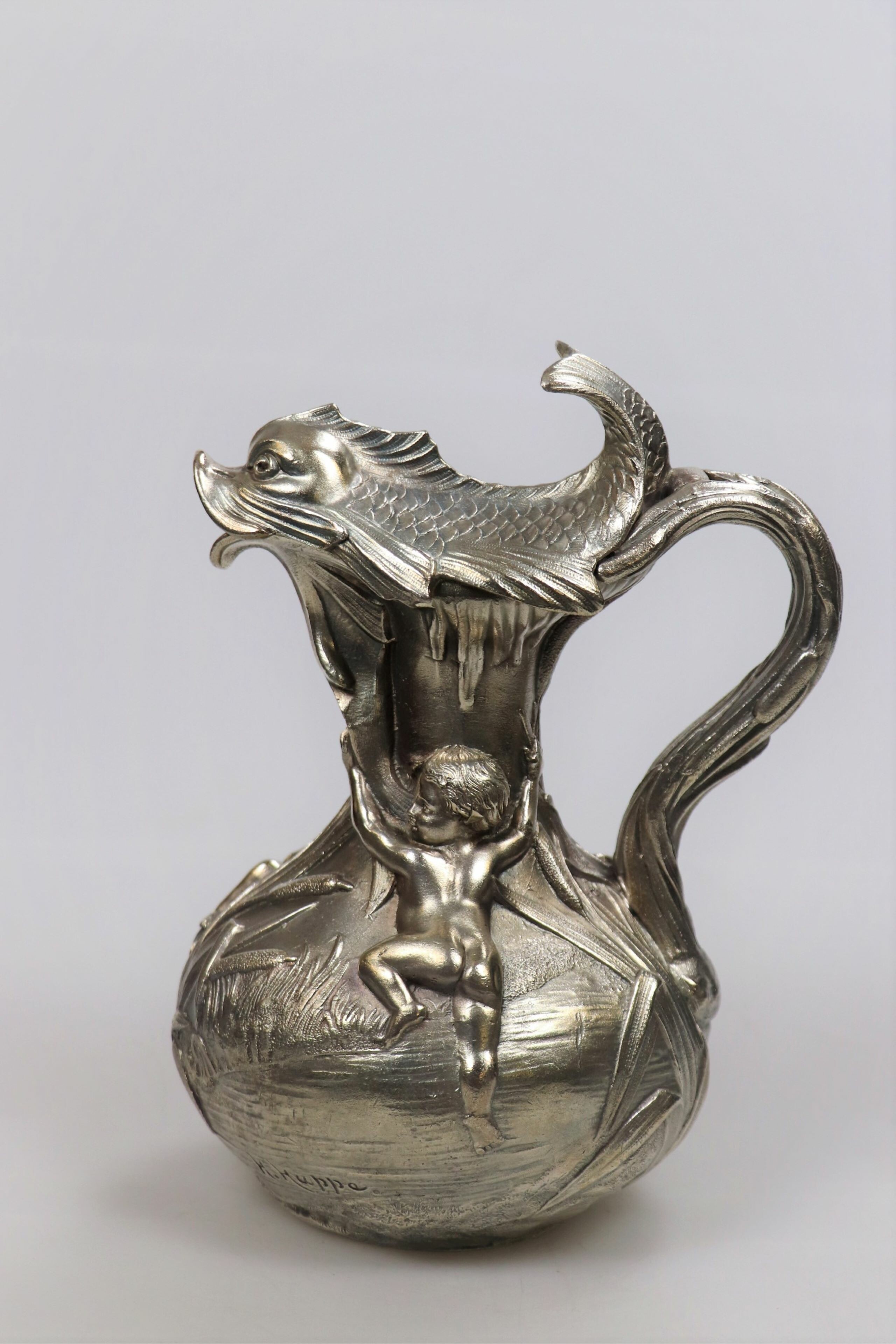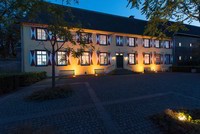Der Krug besitzt eine runde Basis, einen tief-bauchigen Leib und einen zylindrischen Hals mit ausgestellter Mündungszone. Der Deckel ist an einem Scharnier befestigt und der ausladende, schlaufenartige Henkel mit Leib und Mündungszone verbunden.
Der Krug zeigt am Bauch ein hohes Relief einer Seeuferlandschaft mit zwei Putti, welche sich aus dem Schilf und dem See emporheben und sich teils am Hals der Gefäßes festhalten. Der Deckel wurde in Form eines halbplastischen Fisches gestaltet, dessen Schlund die Schnaupe des Gefäßes und Schwanz die Daumenrast des Gefäßes bilden. Im Henkel wurde das reliefierte Schilf des Bauches fortgeführt.
In der Basiszone befindet sich die Signatur des Künstlers Henri Huppe (H. Huppe).
Stempel: Etain Garanti PUR
en

